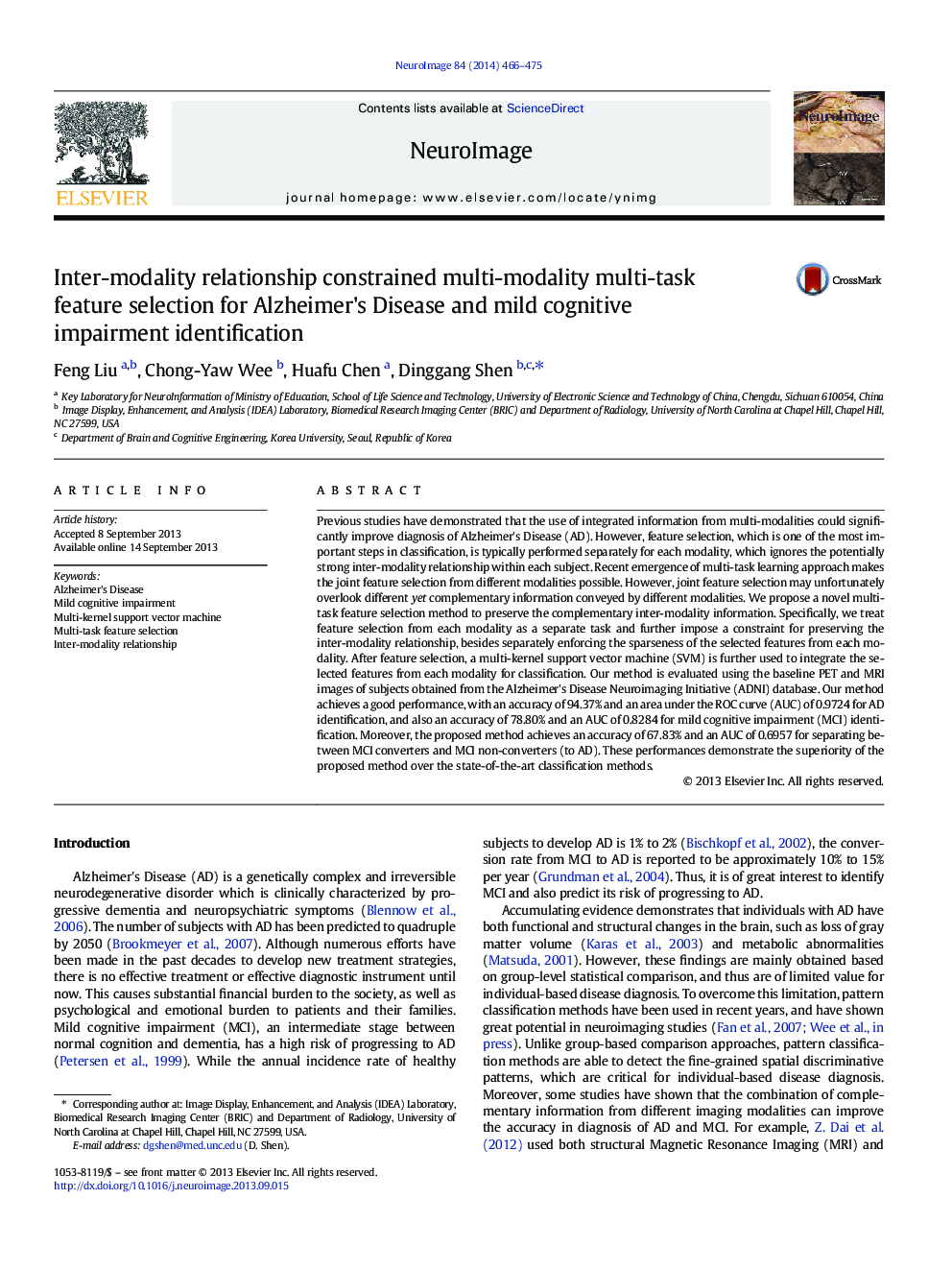| کد مقاله | کد نشریه | سال انتشار | مقاله انگلیسی | نسخه تمام متن |
|---|---|---|---|---|
| 6028493 | 1580920 | 2014 | 10 صفحه PDF | دانلود رایگان |
عنوان انگلیسی مقاله ISI
Inter-modality relationship constrained multi-modality multi-task feature selection for Alzheimer's Disease and mild cognitive impairment identification
ترجمه فارسی عنوان
روابط بین الملل محدودیت چند هدفه ای برای انتخاب چند هدفه برای بیماری آلزایمر و شناسایی اختلالات شناختی خفیف
دانلود مقاله + سفارش ترجمه
دانلود مقاله ISI انگلیسی
رایگان برای ایرانیان
کلمات کلیدی
بیماری آلزایمر، اختلال شناختی خفیف، دستگاه بردار پشتیبانی چند هسته، انتخاب چندین وظیفه، روابط متقابل،
موضوعات مرتبط
علوم زیستی و بیوفناوری
علم عصب شناسی
علوم اعصاب شناختی
چکیده انگلیسی
Previous studies have demonstrated that the use of integrated information from multi-modalities could significantly improve diagnosis of Alzheimer's Disease (AD). However, feature selection, which is one of the most important steps in classification, is typically performed separately for each modality, which ignores the potentially strong inter-modality relationship within each subject. Recent emergence of multi-task learning approach makes the joint feature selection from different modalities possible. However, joint feature selection may unfortunately overlook different yet complementary information conveyed by different modalities. We propose a novel multi-task feature selection method to preserve the complementary inter-modality information. Specifically, we treat feature selection from each modality as a separate task and further impose a constraint for preserving the inter-modality relationship, besides separately enforcing the sparseness of the selected features from each modality. After feature selection, a multi-kernel support vector machine (SVM) is further used to integrate the selected features from each modality for classification. Our method is evaluated using the baseline PET and MRI images of subjects obtained from the Alzheimer's Disease Neuroimaging Initiative (ADNI) database. Our method achieves a good performance, with an accuracy of 94.37% and an area under the ROC curve (AUC) of 0.9724 for AD identification, and also an accuracy of 78.80% and an AUC of 0.8284 for mild cognitive impairment (MCI) identification. Moreover, the proposed method achieves an accuracy of 67.83% and an AUC of 0.6957 for separating between MCI converters and MCI non-converters (to AD). These performances demonstrate the superiority of the proposed method over the state-of-the-art classification methods.
ناشر
Database: Elsevier - ScienceDirect (ساینس دایرکت)
Journal: NeuroImage - Volume 84, 1 January 2014, Pages 466-475
Journal: NeuroImage - Volume 84, 1 January 2014, Pages 466-475
نویسندگان
Feng Liu, Chong-Yaw Wee, Huafu Chen, Dinggang Shen,
